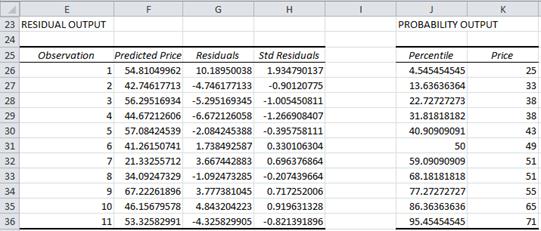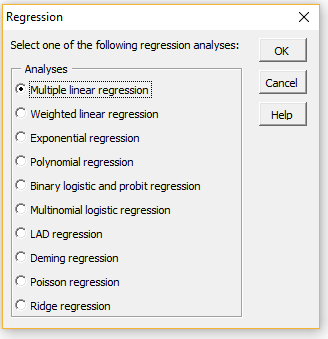
In any case, this is bad news for Company X: IQ doesn't really predict job performance so nicely after all. In our example, the large difference between them -generally referred to as shrinkage- is due to our very minimal sample size of only N = 10. Adjusted R-square estimates R-square when applying our (sample based) regression equation to the entire population.Īdjusted r-square gives a more realistic estimate of predictive accuracy than simply r-square. R Square -the squared correlation- indicates the proportion of variance in the dependent variable that's accounted for by the predictor(s) in our sample data. For simple regression, R is equal to the correlation between the predictor and dependent variable. R is the correlation between the regression predicted values and the actual values. SPSS Regression Output II - Model SummaryĪpart from the coefficients table, we also need the Model Summary table for reporting our results. The confidence interval is huge -our estimate for B is not precise at all- and this is due to the minimal sample size on which the analysis is based. So B is probably not zero but it may well be very close to zero. However, its 95% confidence interval -roughly, a likely range for its population value- is. It's statistically significantly different from zero. The B coefficient for IQ has “Sig” or p = 0.049. Second, remember that we usually reject the null hypothesis if p < 0.05. As indicated, these imply the linear regression equation that best estimates job performance from IQ in our sample. This table shows the B-coefficients we already saw in our scatterplot. However, a table of major importance is the coefficients table shown below. Unfortunately, SPSS gives us much more regression output than we need. REGRESSION /MISSING LISTWISE /STATISTICS COEFF OUTS CI(95) R ANOVA /CRITERIA=PIN(.05) POUT(.10) /NOORIGIN /DEPENDENT performance /METHOD=ENTER iq /SCATTERPLOT=(*ZRESID ,*ZPRED) /RESIDUALS HISTOGRAM(ZRESID). *Simple regression with residual plots and confidence intervals. Selecting these options results in the syntax below. The screenshots below show how we'll proceed. Rerunning our minimal regression analysis from However, a lot of information - statistical significance and confidence intervals- is still missing. Right, so that gives us a basic idea about the relation between IQ and performance and presents it visually. So for a job applicant with an IQ score of 115, we'll predict 34.26 + 0.64 * 115 = 107.86 as his/her most likely future performance score. That is, IQ predicts performance fairly well in this sample.īut how can we best predict job performance from IQ? Well, in our scatterplot y is performance (shown on the y-axis) and x is IQ (shown on the x-axis).


R 2 = 0.403 indicates that IQ accounts for some 40.3% of the variance in performance scores. We now have some first basic answers to our research questions. Here we simply click the “Add Fit Line at Total” icon as shown below.īy default, SPSS now adds a linear regression line to our scatterplot. Right-clicking it and selecting Edit c ontent In Separate Window opens up a Chart Editor window. Let's now add a regression line to our scatterplot. There seems to be a moderate correlation between IQ and performance: on average, respondents with higher IQ scores seem to be perform better.

So first off, we don't see anything weird in our scatterplot. GRAPH /SCATTERPLOT(BIVAR)=iq WITH performance /MISSING=LISTWISE /TITLE='Scatterplot Performance with IQ' /subtitle 'All Respondents | N = 10'. *Scatterplot with title and subtitle from Graphs -> Legacy Dialogs -> Scatter. Walking through the dialogs resulted in the syntax below. a subtitle that says which respondents or observations are shown and how many.a title that says what my audience are basically looking at and.We'll create our chart fromĪnd we'll then follow the screenshots below. This will tell us if the IQ and performance scores and their relation -if any- make any sense in the first place. Create Scatterplot with Fit LineĪ great starting point for our analysis is a scatterplot. We'll answer these questions by running a simple linear regression analysis in SPSS. The main thing Company X wants to figure out isĭoes IQ predict job performance? And -if so- how?

The resulting data -part of which are shown below- are in simple-linear-regression.sav. APA Guidelines for Reporting RegressionĬompany X had 10 employees take an IQ and job performance test.SPSS Simple Linear Regression Tutorial By Ruben Geert van den Berg under Regression


 0 kommentar(er)
0 kommentar(er)
